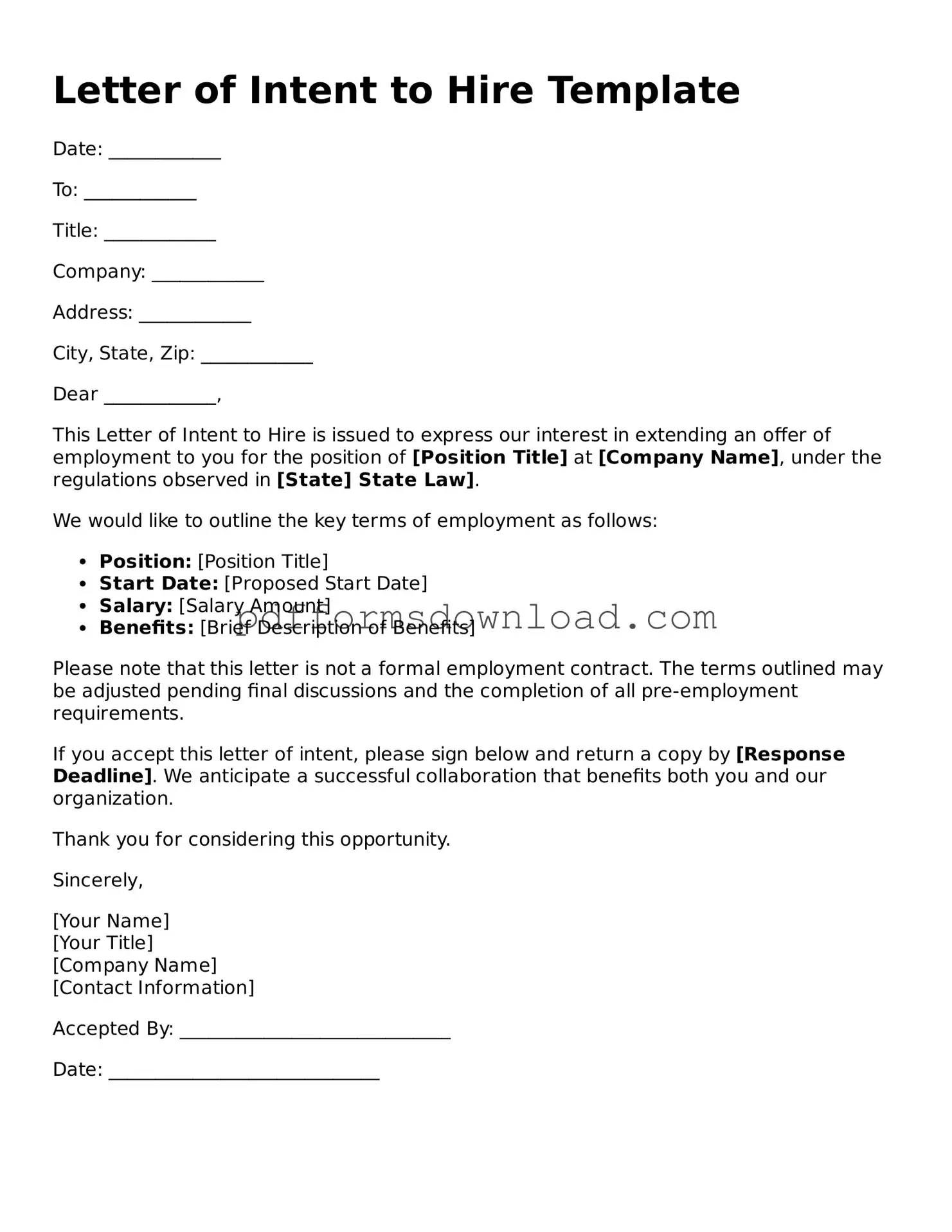What is a Letter of Intent to Hire?
A Letter of Intent to Hire is a document that outlines the preliminary agreement between an employer and a potential employee. It expresses the employer's intention to hire the individual, often detailing the terms of employment, such as position, salary, and start date. While it is not a legally binding contract, it serves as a formal acknowledgment of the hiring process and can help clarify expectations for both parties.
Is a Letter of Intent to Hire legally binding?
No, a Letter of Intent to Hire is generally not considered legally binding. It indicates the employer's intention to hire but does not create an enforceable contract. Both parties can still negotiate terms and conditions before the final employment contract is signed. However, it is important to approach this document with seriousness, as it reflects mutual interest in moving forward.
What should be included in a Letter of Intent to Hire?
A well-crafted Letter of Intent to Hire should include several key elements. These typically consist of the job title, a brief description of the role, salary and benefits information, the proposed start date, and any contingencies, such as background checks or reference checks. Additionally, it can outline expectations regarding the onboarding process and any other relevant details that both parties should agree upon.
Who typically prepares the Letter of Intent to Hire?
Can a candidate negotiate the terms outlined in the Letter of Intent to Hire?
Yes, candidates can negotiate the terms outlined in the Letter of Intent to Hire. It is not uncommon for candidates to seek adjustments to salary, benefits, or other conditions. Open dialogue is encouraged, as this document is meant to initiate discussions rather than finalize agreements. Both parties should feel comfortable addressing any concerns or preferences.
What happens after the Letter of Intent to Hire is signed?
After the Letter of Intent to Hire is signed, the employer typically moves forward with the formal hiring process. This may include conducting background checks, finalizing the employment contract, and preparing for the new employee's onboarding. It is a step closer to officially bringing the candidate on board, but it does not replace the need for a comprehensive employment agreement.
How long is a Letter of Intent to Hire valid?
The validity of a Letter of Intent to Hire can vary depending on the specific terms outlined within the document. Often, it remains valid until the employment contract is signed or until a specified date is reached. If there are no clear timelines mentioned, it is advisable for both parties to communicate openly about their intentions and timelines to avoid misunderstandings.
What should a candidate do if they change their mind after signing the Letter of Intent to Hire?
If a candidate changes their mind after signing the Letter of Intent to Hire, it is important to communicate this decision to the employer as soon as possible. While the letter is not legally binding, it is courteous to inform the employer of the change in intent. This allows the employer to adjust their hiring plans accordingly and maintains professionalism in the process.
